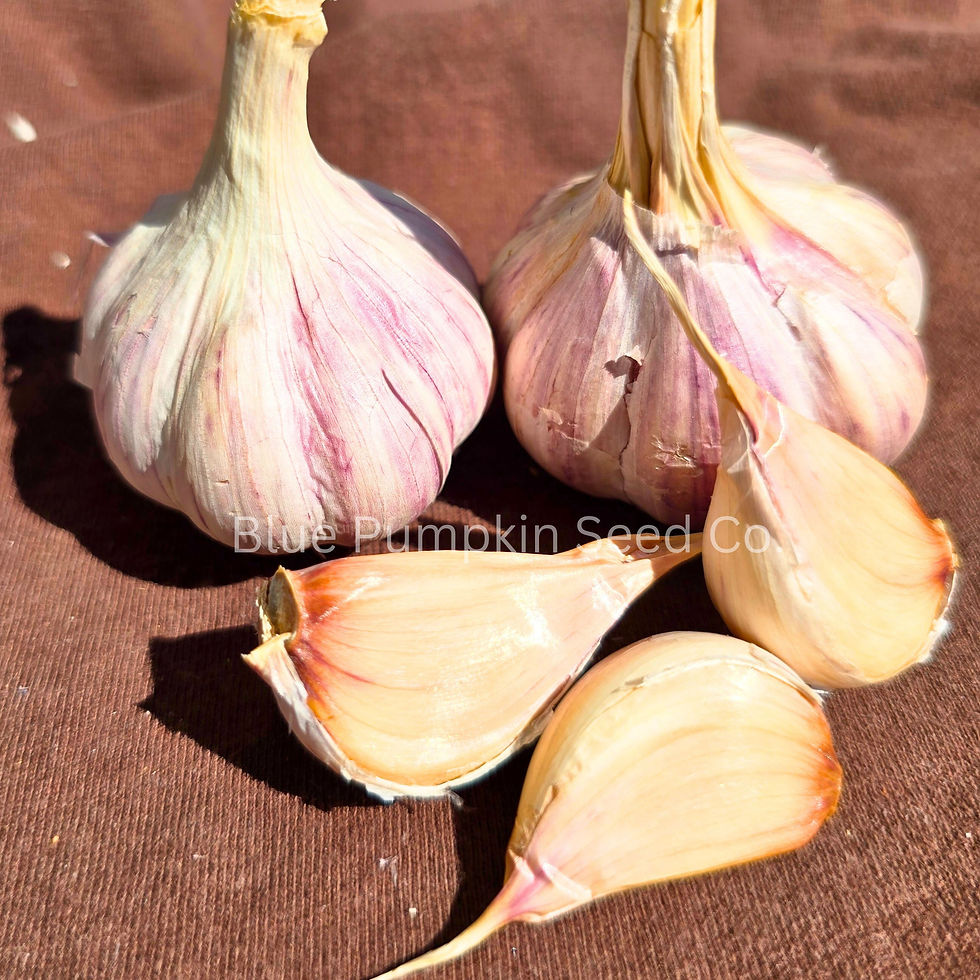Romagna Artichoke seeds
The Romagna Artichoke, also known as the Purple of Romagna, is an heirloom variety originating from the Emilia-Romagna region of Italy. Prized for its tender texture and rich flavor, this artichoke produces large, round heads with vibrant purple hues. It's a favorite among chefs and home cooks alike, perfect for grilling, steaming, or braising.
This variety is a vigorous grower, reaching heights of up to 5 feet with attractive silvery-green foliage. Adaptable to a range of climates, the Romagna Artichoke thrives in full sun and well-drained soil. It's a rewarding addition to any garden, offering both beauty and culinary delight.
Seed count: 20
Botanic name:
Cynara cardunius
Plant spacing:
48-50" / 68-70" for rows
Color:
Green foliage with burgundy to lavender and green heads.
Sowing depth:
1/2"
Sun requirements:
Full sun / part shade
Utilization:
Romagna Artichokes are incredibly versatile and can be enjoyed in a multitude of ways. Their tender hearts and flavorful leaves lend themselves perfectly to classic Italian preparations. Try them "alla Romana," braised in olive oil, garlic, and herbs until meltingly tender. This method preserves their delicate flavor and allows the leaves to be peeled off and savored one by one.
For a bolder flavor, grill them over open flames until slightly charred, or stuff and bake them with a savory breadcrumb mixture. Their unique sweetness also pairs well with lighter dishes. Shave them raw into salads, adding a crisp texture and earthy note.
Frost hardy:
Yes
Maturity days:
85-120 days
Life cycle:
Perennial
Can I start indoors:
Yes
Container friendly:
Yes
Other names:
Purple Romagna and Violet Romagna
Growing Instructions:
**Starting Artichokes from Seed:**
1. **Timing:** Start seeds indoors 8-10 weeks before the last expected frost in your area. For Colorado Springs, this would typically be around late February or early March.
2. **Containers and Soil:** Use seed starting trays or small pots filled with a well-draining seed starting mix.
3. **Planting:** Sow seeds about ¼ inch deep, 2-3 seeds per cell or pot.
4. **Temperature and Light:** Provide warmth for germination, ideally around 70-80°F. Use a heat mat if necessary. Once germinated, maintain temperatures around 60-70°F during the day and 50-60°F at night. Place seedlings in a sunny location or under grow lights.
5. **Thinning:** Once seedlings have a few true leaves, thin to one strong plant per cell or pot.
6. **Vernalization (Cold Treatment):** Artichokes require a period of cold temperatures (30-50°F) for several weeks to promote flowering. You can achieve this by placing seedlings in a cold frame or unheated greenhouse for a few weeks before transplanting.
7. **Hardening Off:** Gradually acclimate seedlings to outdoor conditions by placing them outside for a few hours each day, increasing the duration over a week or two.
**Transplanting and Care:**
1. **Timing:** Transplant outdoors when all danger of frost has passed and seedlings are 6-12 weeks old.
2. **Soil Preparation:** Choose a sunny location with well-drained, fertile soil. Amend the soil with compost or well-rotted manure before planting.
3. **Spacing:** Plant seedlings 2-3 feet apart in rows 3-6 feet apart to allow for their mature size.
4. **Watering:** Water deeply and regularly, especially during hot weather. Avoid overwatering, which can lead to root rot.
5. **Fertilizing:** Artichokes are heavy feeders. Fertilize every 4-6 weeks with a balanced fertilizer or use a nitrogen-rich fertilizer like 21-0-0.
6. **Mulching:** Mulch around the plants to conserve moisture, suppress weeds, and protect the soil from temperature fluctuations.
7. **Pest and Disease Control:** Monitor for aphids, slugs, snails, and other pests. Handpick pests or use organic pest control methods if necessary. Watch for fungal diseases and address them promptly.
8. **Harvesting:** Harvest artichoke buds when they are full-sized but before the bracts start to open. Cut the stem about 2-3 inches below the bud.
9. **Overwintering:** In Colorado Springs, artichokes may not survive the winter. You can try to overwinter them by heavily mulching the plants or digging them up and storing them in a cool, dark place. However, it's often easier to grow them as annuals and start new plants from seed each year.
**Additional Tips:**
* Consider growing varieties suited to your climate.
* Provide adequate support for tall plants if necessary.
* Remove side shoots to encourage larger central buds.
* Leave some buds to flower to attract pollinators.
* Enjoy your homegrown artichokes!
Remember that gardening is a learning process, and conditions can vary. Don't be afraid to experiment and adjust your techniques based on your specific environment and the needs of your plants.































